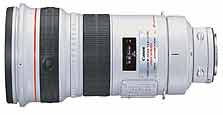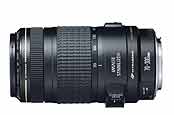Contact Details: Scotch Macaskill, Dirt Road Traders, Currys Post Road, Howick, KwaZulu-Natal, South Africa. Tel: +27 (0)82 578 2329. Privacy: Your privacy is guaranteed. See our Privacy Policy for more. This site accepts advertising and other forms of compensation - see Disclosure and Advertising for details. Site updated: 2022. Copyright © 2002 - 2022 Scotch Macaskill

| ||||||||||
|
||||||||||
|
See Also: |
Canon Telephoto Lenses

It's useful to think of Canon telephoto lenses as telescopes for your film or digital camera. Like a telescope, a telephoto lens enlarges your subject, bringing it closer and making it appear larger in your viewfinder and on your camera's digital sensor. Telephoto lenses prove invaluable when you can't get near enough to the subject you're photographing. With a telephoto lens you can, for example, take sports shots from the grandstand or shoot pictures of wild animals from the safety of a vehicle or hide. What are telephoto lenses? Lenses with a focal length longer than that of a 50mm standard lens can be classed as telephotos. In practice though, 85mm is regarded as the shortest telephoto focal length for fixed or prime lenses, while for telephoto zoom lenses, the short end of the telephoto range starts around 70mm, as in a Canon 70-200mm telephoto zoom.
Telephoto Lens Magnification The longer the focal length of a lens, the greater the magnification. Thus a 100mm telephoto lens gives twice the magnification of a 50mm standard lens. In practice, this means the subject's height and width in the viewfinder - and hence on the digital sensor or film - is doubled when you attach a 100mm lens to the camera. Similarly, a 400mm telephoto lens gives eight times (x8) the magnification of a standard lens. If you're on safari and there's a big male lion staring at you from 50m away, he's going to appear very small in the viewfinder with a 50mm lens on the camera. Change that to a 500mm telephoto lens, and the lion is magnified 10 times. Now he nearly fills the frame and you can even see the scars on his face and the piercing yellow eyes. Prime v Zoom Telephoto Lenses Canon telephoto lenses fall into two main categories:
1. Prime telephotos offer the best image quality because they have fewer lens elements, so fewer compromises have to be made. Their main disadvantage is the fixed focal length, limiting your options when composing the shot. When photographing fast moving subjects, as in sport or wildlife, you can find the subject suddenly looming too large in the viewfinder. These lenses are also large, heavy, and expensive. They are nevertheless the first choice for professional sports and wildlife photographers because the quality can't be beaten and they offer wider maximum apertures than zoom lenses of equivalent focal length. Within the family of prime Canon telephoto lenses, some of the most prized are:
2. Zoom telephotos are hugely popular because of their versatility and often affordable price tag. Lens technology has improved drastically in recent years and today's top-of-the-range Canon zoom lenses compare favorably with Canon's prime lenses when it comes to image quality. For all-round usefulness, combined with affordability and very acceptable image quality, telephoto zoom lenses are a "must-have" lens for most photographers. Among the more popular and highly rated Canon telephoto zoom lenses are:
Return to Canon Lens Reports |
|||||||||
|
|
||||||||||